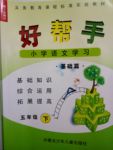On Nov.18th, 1908, three men went up in a balloon. They started early in London. The headman was Augusta Gaudron, and the other two men were Tannar and Maitland. They had a big balloon and they were ready for a long way.
Soon they heard the sea. They were carrying the usual rope, and it was hanging down from the basket of the balloon. At the end of the rope they had tied a metal box. This could hold water, or it could be empty. So they were able to change its weight. It was for use over the sea. They were also carrying some bags of sand.
After the sun rose, the balloon went higher. It went up to 3,000 meters, and the air was very cold. The water in the balloon became ice. Snow fell past the men’s basket, and they could see more snow on the ground. The men tried to throw out some more sand, but it was hard. They tried to break the icy sand with their knives, but it was not easy. The work was slow and they were still falling, so they had to drop some whole bags of sand. One of them fell on an icy lake and made a black hole in the ice.
At last they pulled the box into the basket. It was still snowing; so they climbed to get away from the snow. They rose to 5,100 meters! Everything became icy. They were so cold that they decided to land. They came down in Poland heavily but safely. They had travelled 1,797 km from London!
1.Three men flew in a balloon ________.
A. to visit Poland B. to another city
C. for nearly 1,800 kilometers D. nearly a century ago
2.The metal box was used for ________.
A. carrying the bags of sand B. changing the weight
C. holding ropes of the balloon D. keeping drinking-water
3.When the balloon went up higher, ________.
A. the temperature of the balloon began to fall
B. they saw the sun go down and the snow falling
C. they made a hole in the basket with their knives
D. nothing could be seen but snow on the ground
4.At last the balloon landed ________.
A. early in London B. on the sea heavily
C. on a lake with safety D. in a foreign country
5.Which of the following is TRUE?
A. The three men started their long journey before the sun rose.
B. The balloon began falling down when they threw bags of sand.
C. The three men had to land because they felt cold and hungry.
D. They put the rope into the basket and the balloon went higher.
 小学学习好帮手系列答案
小学学习好帮手系列答案 小学同步三练核心密卷系列答案
小学同步三练核心密卷系列答案 小学学习好帮手系列答案
小学学习好帮手系列答案 小学同步三练核心密卷系列答案
小学同步三练核心密卷系列答案